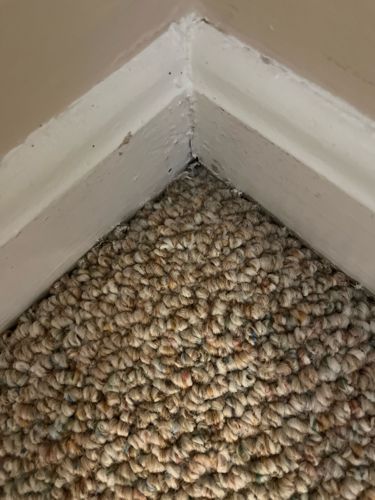Carpet Beetle
Scientific Name: Anthrenus (Varied Carpet Beetle), Attagenus (Black Carpet Beetle), Trogoderma (Cabinet Carpet Beetle) - specific species cannot be determined from the image.
Order & Family: Coleoptera, Dermestidae
Size: Adults: 2-5 mm (0.08-0.2 inches); Larvae: up to 5 mm (0.2 inches)

Natural Habitat
Indoors, carpet beetles are found in dark, undisturbed areas where their food sources are present, such as under carpets, in closets, in attics, within wall voids, and behind baseboards. Outdoors, adult beetles are found on flowering plants.
Diet & Feeding
Larvae feed on a wide variety of animal-based materials including wool, silk, fur, feathers, leather, and stored food products like dried meats and pet food. Adult carpet beetles primarily feed on pollen and nectar from outdoor plants.
Behavior Patterns
Carpet beetles undergo complete metamorphosis with four life stages: egg, larva, pupa, and adult. The larval stage is responsible for most of the damage, as they feed on natural fibers for several months before pupating. Adults are attracted to light and often found near windows, moving slowly. They lay eggs in secluded areas rich in natural fibers.
Risks & Benefits
Potential risks include significant damage to natural fiber products like carpets, clothing, furniture, and museum specimens. They can also cause skin irritation or allergic reactions in sensitive individuals due to their larval hairs. There are no significant benefits to humans or the ecosystem provided by indoor carpet beetles, though outdoor adult carpet beetles may contribute to pollination.
Identified on: 8/11/2025